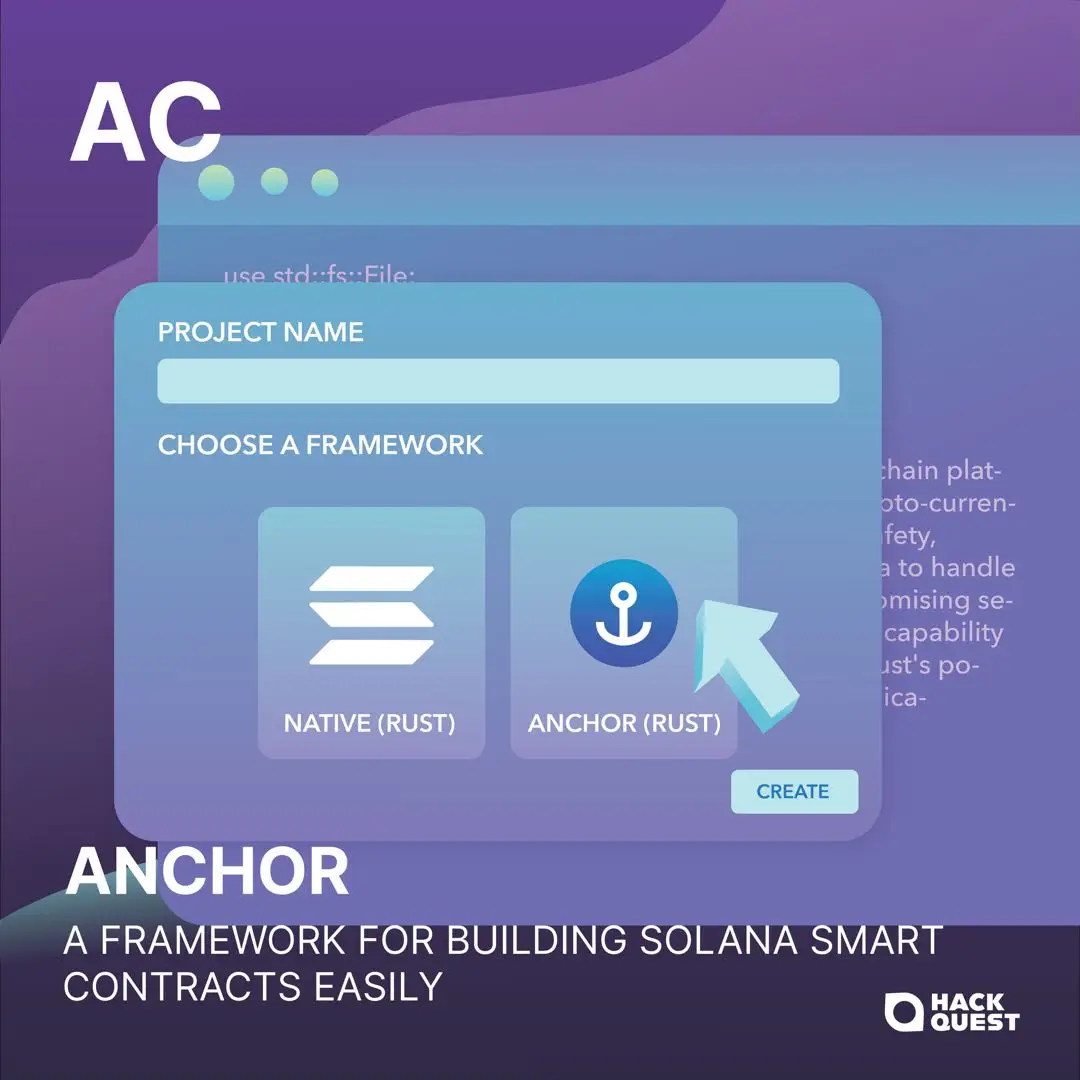Welcome to the world of Web3, where cryptocurrencies, blockchain, and a unique culture converge. Entering the world of Web3 can be both thrilling and overwhelming, especially when faced with the seemingly cryptic language used by enthusiasts. Don't worry if you feel they sound like some secret codes, we are here to unravel their meaning. In this article, we are going to introduce [Anchor].
Anchor is a widely used framework in the Solana ecosystem and simplifies the process of building Solana programs.
To understand Anchor's role, it's essential to first grasp the basics of Solana and the broader concept of Web3. Solana is a blockchain platform known for its incredible speed and efficiency, capable of processing thousands of transactions per second, which significantly reduces transaction costs and latency. Web3 represents the next generation of the internet, where decentralized applications operate on blockchain technology, allowing for peer-to-peer transactions and interactions without centralized control.
Anchor offers pre-built templates for common smart contract functionalities, speeding up the development process.
It includes a built-in testing framework that allows developers to write and run tests for their smart contracts, ensuring their code works as intended before deployment.
IDL (Interface Description Language)
Anchor uses IDL to automatically generate client libraries, making it easier for front-end applications to interact with Solana programs.
How Does Anchor Benefit Solana Development?
Anchor's main allure is its ability to make Solana development more accessible and less error-prone. By providing a standardized framework, it reduces the learning curve for new developers and minimizes the chances of bugs, which can be costly and dangerous in a blockchain environment. Furthermore, Anchor's testing and deployment tools ensure that programs are robust and secure before they go live.
The creation of Anchor was motivated by the challenges developers faced when building on Solana. Solana's unique architecture and the Rust programming language, while powerful, presented a steep learning curve. Anchor was developed to bridge this gap, inspired by the success of similar tools in other blockchain ecosystems that significantly lowered the barrier to entry for developers. Its development has been a community-driven effort, with contributions from many developers seeking to enhance the Solana ecosystem.
Imagine a developer wants to create a decentralized finance (DeFi) application on Solana that allows users to lend and borrow assets. Using Anchor, the developer can quickly set up the project, use templates for common DeFi functionalities, and focus on customizing the application to their vision. Throughout the process, Anchor's testing framework helps ensure that the smart contracts are secure and function as expected, reducing the risk of vulnerabilities.
Anchor represents a significant leap forward in democratizing blockchain development on Solana. By abstracting complex aspects of blockchain programming and providing a suite of development tools, it enables developers of all skill levels to build sophisticated, secure, and efficient decentralized applications. For anyone looking to venture into Solana development, learning Anchor is an excellent starting point.
As the Solana ecosystem continues to grow, tools like Anchor play a crucial role in fostering innovation and making blockchain technology more accessible to a broader audience. Whether you're a seasoned developer or new to the world of Web3, Anchor offers the resources to bring your decentralized applications to life on one of the fastest blockchains in the world.
